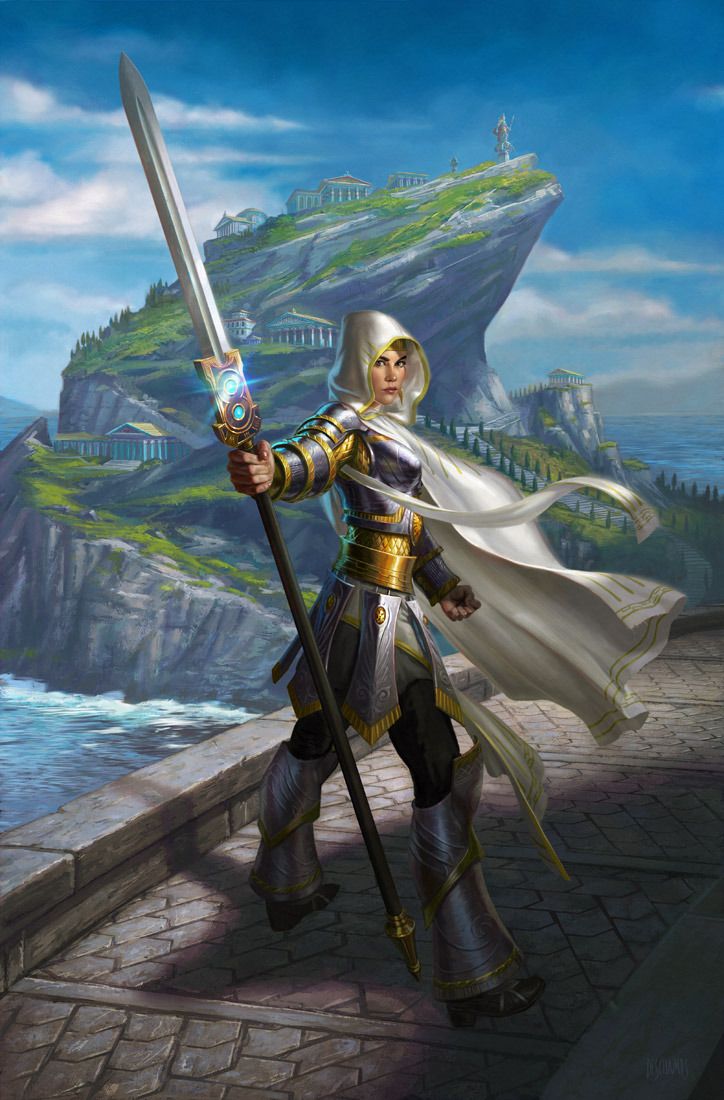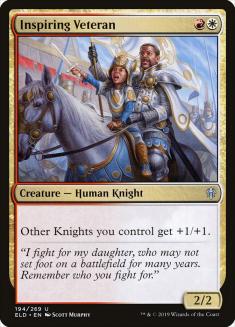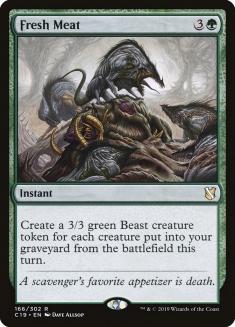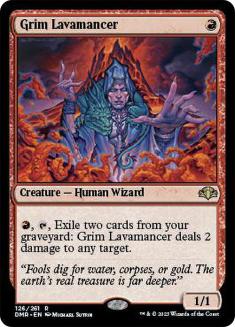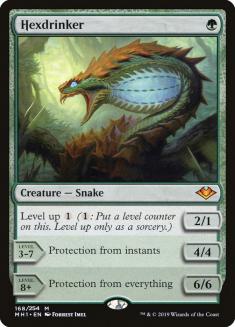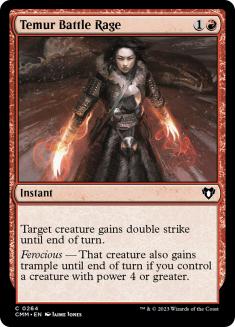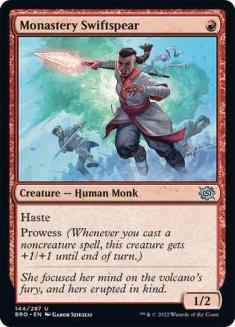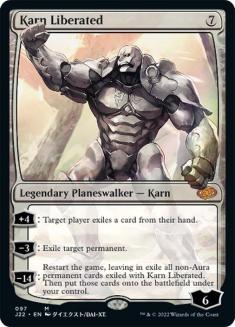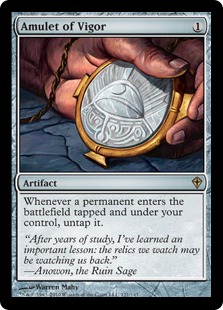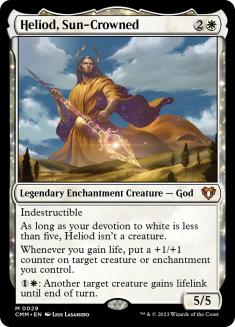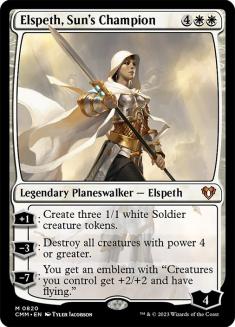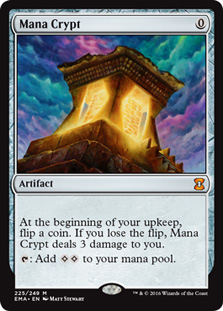The Magic Online Championship returned in a new form and remains one of my favourite events to watch. The coverage was headlined by Star City Games’s finest — the Cedric Phillips and Patrick Sullivan dream team and my former partner-in-crime Emma Handy — as well as Luis Scott-Vargas and Legacy stalwart Anuraag Das bringing the same infectious energy you can find on his daily streams. They found no shortage of interesting matches and moments worth dissecting here — including that Cube pick — but it’s worth asking why the tournament itself was compelling.
Accessible = Relatable
Any tournament coverage must be aware of its audience and objectives — should every round be a clash of the titans or do you want to follow a range of stories and strategies? Sometimes that’s decided for you — the World Championship is all sharks — but usually you can and must make those choices.
The pre-Magic Pro League (MPL) Pro Tour coverage could achieve a good balance here. A feature match in the later rounds of Day 2 might pit two of the game’s greats vying for yet another Top 8 — that might be the tipping point for Hall of Fame votes or a spot in the World Championship — as well as veteran grinders seeking that breakthrough finish or even Pro Tour first-timers enjoying the ultimate underdog story. It was easy to visualize yourself in those chairs and the steps you could take to get there (even if your chances of doing that were remote and you were honest enough to admit it). If I win this PTQ and everything goes right at the Pro Tour, who knows what that could mean?!
Under the current system, the literal answer is that nobody knows what that could mean — the most reliable source for information and updates is a hobbyist on Twitter — and the MPL/Rivals setup is explicitly designed to promote continuity over churn. A system this opaque loses its aspirational quality — even if you become a fan of a player over time after getting to see them compete constantly, you can’t tell yourself you might join them. When mainstays of professional play like our own Ari Lax or Sam Black can’t find a route in, what hope is there for the rest of us?
The Magic Online Champions Showcase was a perfect mix of old — Martin-Eric Gauthier, who has been tearing it up on the platform since Day 1, and 2006 Pro Tour Kobe winner Jan-Moritz Merkel — and new — Daria Martins, with just over 100 lifetime matches on Magic Online, making a name for herself on its biggest stage. Whatever your level of experience, someone at that level qualified for this tournament and you can aim to repeat their feat. The varied routes that players took to get there suggest their own storylines — would SCG Tour crusher Dylan Donegan take the Modern metagame by surprise as he did to win the qualifier that got him there? How would Vintage specialist Justin Gennari adapt to two totally new formats? Could Bernardo Santos finally take home a trophy in his third MOCS playoff appearance?
As the weekend wrapped up, I felt more invested in some of the MOCS competitors who were strangers to me last Friday than in some players who have floated around the MPL/Rivals system for three seasons now. I can’t claim that’s a universal reaction but, based on the response I’ve seen to this event, it’s not just a personal one either.
Jund Death’s Shadow Is Approaching Its Final Form in Modern
Creatures (18)
Lands (20)
Spells (22)

Jund Death’s Shadow has been a constant fixture of Modern for years but recently supplanted Rakdos Death’s Shadow as a response to the popularity of Selesnya Company — it’s bold to stick to Blood Crypt when the best deck has maindeck Auriok Champion. Tarmogoyf gives you a green threat that punches through Champion while attacking or blocking well against the red aggro decks.
This didn’t fix another glaring weakness — the lack of good one-drops. Monastery Swiftspear and Soul-Scar Mage simply aren’t what they are in Prowess variants that can trigger them several times with a single Lava Dart or chain spells together with cantrips and Light Up the Stage. None of the other Rakdos options are appealing — even Devon O’Donnell (d00mwake) had to put down his Bomat Couriers for this event. You might be tempted to cut them altogether and let Tarmogoyf fill those slots but you need one-drop damage sources to enable Scourge of the Skyclaves.
Daniel Goetschel’s Grim Lavamancers fill this role to some degree but are mainly a way to fight the non-Champion parts of Selesnya Company as well as any unexpected creature decks (like Sunday champion Jan-Moritz Merkel’s choice of Azorius Spirits).
The real hero is Hexdrinker.
As someone who is paid by Big Lava to mention Lava Dart repeatedly every time I write about Modern, this might seem like a head-scratcher. I can’t pretend Hexdrinker is good there (though Tarmogoyf gives you a dozen good threats in those matchups instead of just eight so sideboarding out Hexdrinker is less punishing) but it’s exceptional everywhere else. Goetschel found himself in many situations on camera where any other one-drop would have been obsoleted long ago but Hexdrinker by itself threatened to put the game away.
Jund Death’s Shadow will often control the biggest threats but this is contingent on its own life total being low, making attacking into a clogged battlefield risky. Hexdrinker breaks these stalls open and becomes your best threat by default in any game that goes sufficiently long.
At a glance, Hexdrinker is a better fit for decks with more mana sources that can expect to level it up more quickly. This deck is designed to operate with as few resources as possible, but that makes its own case for Hexdrinker — your spells are so cheap that it’s easy to cast one and level up Hexdrinker in the same turn, and flooding is a more severe issue that Hexdrinker hedges against. As a lightning rod for removal that has to be answered within a certain window, Hexdrinker both clears the way for Lurrus of the Dream-Den and is the perfect threat to recur with it.
Temur Battle Rage is a unique element of the various Death’s Shadow decks that’s often your only out to win the game and has been a main incentive to play red since the archetype’s arrival. You usually needed to pair it with exactly Death’s Shadow for a sudden kill, but Scourge of the Skyclaves is even better there, as the first strike damage can increase Scourge’s power for the second hit. Despite this, stock lists run a maximum of two copies — the main exceptions are aggro-combo lists with other pump effects like Become Immense that are happy to increase their exposure to removal to become faster.
Goetschel’s innovation was to sideboard the remaining copies of Temur Battle Rage, making these lines an explicit part of his plan. Against red aggro decks, this lets you shave a crucial attack step off the game; against combo or ramp, you can play as a fast, disruptive aggro deck with a Splinter Twin-esque kill via Temur Battle Rage.
This has other benefits in deckbuilding, making his sideboard more cohesive — perhaps you’d rather have more removal against aggro, some graveyard hate, or cards like Damping Sphere against Amulet Titan or Mono-Green Tron, but you can’t have all of these at once and this ensures you get to cut your weakest cards for a meaningful upgrade even against an unexpected strategy.
Heliod, Sun-Crowned Is Still The One True God of Modern
Creatures (30)
- 4 Spike Feeder
- 4 Auriok Champion
- 4 Arbor Elf
- 1 Scavenging Ooze
- 2 Walking Ballista
- 4 Ranger-Captain of Eos
- 4 Heliod, Sun-Crowned
- 4 Conclave Mentor
- 3 Skyclave Apparition
Lands (22)
Spells (8)

Selesnya Company has cemented its status as the best deck in Modern but it’s no Amulet Bloom or Azorius Eldrazi (or even the Tibalt, Cosmic Impostor Cascade decks that took over for a week in what feels like years ago) — as best decks go, it’s relatively tame. A format as large as Modern has cards and strategies that can exploit any weakness — Mono-Green Tron or hard control decks that don’t care about infinite life are natural foils for Selesnya Company.
Why did none of these predators show up here? One answer is that the other pillars of the format — notably Monastery Swiftspear — help to keep these decks in check (or at least force them to acknowledge competing pressures that stop them focusing just on Selesnya Company) and Company’s good matchups against them are part of what makes it so strong. Most linear decks that could take the format by surprise (as Pete Ward tried on Sunday with Oops All Spells) were neutered or removed entirely by the recent bans, making it easier to prepare for the survivors. Strategies hoping to beat Heliod in a fair fight can be matched with the same broad answers — removal for creature decks, Veil of Summer or resilient creatures for interactive decks.
Another reason is the structure of this event — these small, exclusive tournaments are an unrepresentative snapshot of the format as a whole as players try to outlevel each other. Selesnya Company’s popularity this weekend (and its win in the hands of Martin-Eric Gauthier) makes a good case for it but so does its success in the gigantic and more diverse Strixhaven Championship Qualifier happening on Magic Online at the same time:
Reevaluate Your Priors?
Jan-Moritz Merkel dominated Sunday’s tournament and did it his own way. He told us all what he was going to draft in Cube and won with it anyway:
This isn’t just a fluke — Merkel boasted a staggering 73.6% win rate in Cube over a small-ish but still impressive sample size. The man had a plan and it worked. What’s not to love?
Merkel’s route to the highest-stakes Cube trophy of his life involved not only a bold claim about his favourite archetype but some highly controversial card choices. This invited the inevitable debate on those picks but also led to a larger discussion about how we should react when our assumptions are challenged like this.
Mark’s Tweet is a good example of the discourse that consumed Twitter on Sunday, happily putting the naysayers in their place.
Let’s take that message to heart. What lessons should a perfect student learn from Merkel’s draft? Is it that Elspeth, Sun’s Champion is a better card than Mana Crypt in the abstract? In this archetype? In Merkel’s version of it in this draft? Is it a speculative pick with the rest of Pack 3 in mind or a decision he makes every time? Is it a close call or an easy one?
And that’s just one pick. What role does this Orzhov Midrange deck play in Vintage Cube? What are its strengths and weaknesses? What are the clearest signals that it’s open and worth moving into (especially if others are following the same script)?
If you can’t make the case for the pick or the deck yourself, pointing to the scoreboard isn’t any more informed or productive than dismissing it out of hand.
Luckily, we can hear from the man himself. Here’s Merkel in the winner’s interview:
The ultimate authority on the deck is clear that it’s a personal preference rather than a recipe for breaking the format. His absurd win rate is less of an endorsement of the deck and rather of him as a player who could also succeed with other archetypes he chose to master (as his Modern win rate, highest in his pod and tied with the other pod’s champion, confirms). What it does provide is a proof of concept — this is one of many decks that can succeed with careful navigation. If you’re an expert on Mono-Red Aggro instead, you don’t have to put down your Mountains.
Sam Black’s excellent dissection of the idea of personal playstyles is worth revisiting here:
Merkel’s mastery of Orzhov Midrange is a local maximum — it may not make sense for you to force the archetype but it may well make sense for him. This can apply to individual picks too — someone else drafting Orzhov Midrange might take it in a more or less proactive direction, informing any close calls they have to make.
This shouldn’t be an automatic way to close off disagreement. In one misstep on camera, Merkel cast a post-combat Drogskol Captain in Modern when there was no good reason to do so; there were no Twitter scolds insisting that it must be correct actually because he had the highest win rate in Modern — we recognise that it’s a mistake and that he’s still a great player because it’s a rare one (and because he is self-critical enough to look for mistakes, a crucial part of self-improvement). Even in the drafting process, where goals are more vague and subjective, there will usually be a choice that best satisfies a given set of goals.
Appeals to authority also leave you helpless when those authorities argue. It’s easy to trust Merkel because he is (or was!) the only person singing the praises of Orzhov Midrange, but what about an established archetype like Mono-Red Aggro? Sam Black and Paulo Vitor Damo da Rosa were both known as Faeries experts during its time in Morningtide Standard — you should probably listen to either of them before anyone else (on Faeries or in general), but you need other heuristics for when they disagree. Even on this topic, how much weight do you assign to Merkel’s domain-specific knowledge versus the combined knowledge of many general experts (few of whom would take Elspeth, Sun’s Champion)? Guillaume Wafo-Tapa is the best control specialist of all time but nobody else chooses to draw whenever possible — there are good reasons for that!
With all that in mind, let’s look at the pick itself:
Here’s Merkel’s commentary:
His curve at this point has four three-drops with a single pip (Blade Splicer, Lingering Souls, Trinket Mage, Recruiter of the Guard) — of those, Trinket Mage and Recruiter of the Guard can both find further cards that want colourless mana and Mana Crypt can help you cast another spell and flashback Lingering Souls in the same turn. Trinket Mage is the perfect card to pair with Mana Crypt — it’s another way to jump up in mana if you already drew Mox Jet, and it finds Skullclamp, which is very hungry for colourless mana (both to move it around and to cast the drawn cards). Of his two-drops, Soulfire Grand Master and Nullpriest of Oblivion can be turbo-charged in the mid-game with colourless mana. His deck is already better-suited to use Mana Crypt than a quick glance suggests.
This Vintage Cube is full of expensive cards across all colours that Merkel can pick up with a whole pack remaining, especially when he has correctly prioritized cheaper cards until now and few other drafters will want the clunkers (especially in white). There’s some chance (but we can assume a low one, since the argument still holds otherwise) that you wheel Elspeth, Sun’s Champion and get the best of both worlds. Even if you don’t, you’re likely to get one of Restoration Angel; Yawgmoth, Thran Physician; and Glen Elendra Archmage back. Let’s see how many expensive spells appeared in this pack:
- Pack 3, Pick 2 (P3P2): Merkel takes Teferi, Hero of Dominaria; the pack contains Banishing Light, Hangarback Walker, Baneslayer Angel
- P3P3: Merkel takes Hero of Bladehold; the pack contains Smokestack
- P3P4: Merkel takes Monastery Mentor; the pack contains Archangel Avacyn and Felidar Retreat
- P3P5: Merkel takes Gideon, Ally of Zendikar; the pack contains Sword of Feast and Famine and The Scarab God
- P3P7: Merkel takes Oust; the pack contains Sun Titan and Pack Rat
- P3P9: Restoration Angel wheels from Merkel’s original pack (he takes Anguished Unmaking)
- P3P10: Banishing Light wheels
- P3P11: Smokestack wheels
- P3P12: Felidar Retreat wheels
- P3P15: Sun Titan wheels as the last card in the pack
This density of expensive cards is not surprising after looking at the card list. Perhaps Elspeth, Sun’s Champion is better than every other expensive card (though in the two times he drew it on camera, the last-pick Sun Titan or really any finisher would have locked up the game too) but is that much better than the possibility of Turn 1 Monastery Mentor or Turn 2 Hero of Bladehold?
If we aren’t trying to end the game, what are we trying to do? We don’t have a better end-game than the green or artifact-heavy ramp decks and can barely interact with the most broken stuff like Sneak Attack. Most other archetypes are hoping to end the game, forcing us to engage on those terms even if we don’t want to. It’s much easier for them to end the game if they have Mana Crypt (if none of the pro-Crypt arguments appeal to you, stopping someone else getting it should) and much easier for us to end it if we do — it’s not as though Mana Crypt places us on a firm deadline but doesn’t help us meet it.
Describing Mana Crypt as restrictive in this way is libellous. It’s often said that, in retail Limited, every deck is a flavour of midrange — your mana curve is likely to look like a bell curve tilted in one direction. That’s less and less true as a format becomes more powerful and streamlined — in Vintage Cube you can draft an Orzhov Aggro deck with ten one-drops that would look and play very differently from Merkel’s.
Here, ‘midrange’ is a label that has meaning rather than a default. The whole point of Mana Crypt is that it shatters mana constraints, giving you starts that could come from a hyper-aggressive or ramp strategy without any extra commitment. Monastery Mentor could fairly be called a ‘midrange’ card in this deck — when you have Turn 1 Mana Crypt, it’s a scarily aggressive card. Why bother filling your deck with Fyndhorn Elves when you can cast Teferi, Hero of Dominaria on Turn 3? Mana Crypt doesn’t just impose restrictions, it lifts them.
Whatever your final stance, the best take — unsurprisingly — comes from Patrick Sullivan:
This whole furore is far more interesting than Merkel making safe picks that nobody would argue with and methodically crushing his pod with the most boring deck of all time. Give me more of this, give me more Jan-Moritz Merkel, and give me more high-stakes Cube coverage on Magic Online.

